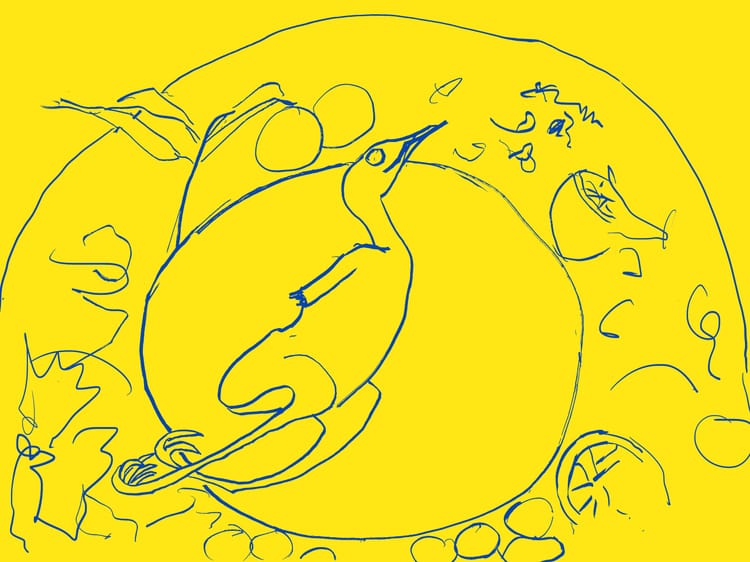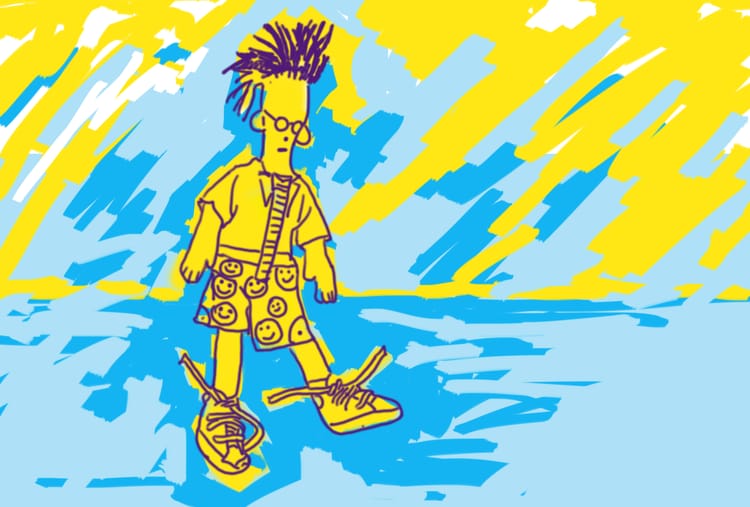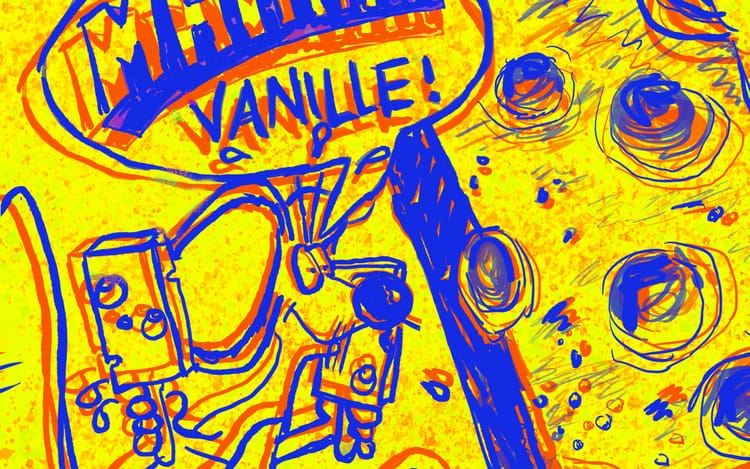Expiration Dates: El Bulli

by Sahar Tavakoli.
Expiration Dates is a collaboration between The Stopgap’s obituary column and RELISH—a multidisciplinary research project aimed at Reframing European Gastronomy Legacy through Innovation, Sustainability, and Heritage.
Under the European Union’s Horizon Europe Research and Innovation Programme, RELISH explores the role of recipes, rituals, and culinary practices in the formation of European cultural identity. Gastronomy is never static. We adapt recipes according to skill level, party size, and wherewithal; we substitute ingredients in keeping with changes to availability, affordability, and desirability. Our tastes entangle with histories of trade, migration, and fashion. The “Reframing” part of RELISH, then, lies in understanding heritage not as a fixed inheritance but as a living, transformative practice.
This short-run series offers four culinary obituaries, together intended to reflect on the lives and afterlives of foods that have been celebrated, neglected, or regulated out of existence. Can a food or dish be simultaneously shameful and celebratory? Can it be brought back from the dead? Who or what gets to act as spokesperson for our food? Who, moreover, is qualified to judge its value? What follows here are reflections on the work food does—before, during, and after its disappearance.

Expired #2: El Bulli
Homeopathy has its remedies; El Bulli had its foams.
No bark, all bite: The El Bulli kitchen is closed. Technically a minigolf green according to its 1961 planning permit, the thrice Michelin-starred restaurant and pioneering force in the New Cookery movement plated its last meal on July 30, 2011.
It changed often, in name, nature, and custodianship. But it never left the hills above Cala Montjoi, a bay in the Catalonian municipality of Roses, on the Costa Brava. Mr and Mrs Hans and Marketta Schilling chose the site, a German-Czech pair who, accompanied by their French bulldogs, had spent the years leading up to the 1961 permit exploring possible locations for a tourist resort. The resort never materialised and nor, for that matter, did the approved putt-putt. What they managed was a chiringuito—a small, thatch-roofed, beach kiosk. Locally known as the German Bar for the humans who ran and operated it, to them it was the Hazienda el Bulli, a tribute to their canine family.
A hotelier by aspiration, Hans Schilling was a physician by training, specializing in the much maligned field of homeopathy. Developed in the late eighteenth century as a form of treatment and a critique of medical orthodoxy, Homeopathy proceeds from a doctrine of similia similibus curentur (“like is cured by like”): a vowel substitution on Paracelsus’s similia similibus curantur (“like can be cured by like”) that shifts the passive into the subjunctive—recommending, rather than observing, the instinct of game for recognising game.
Homeopathic remedies are produced through potentisation: a process invented by German physician Samuel Hahnemann in 1796 (though not elaborated upon until 1810) which involves serially diluting some original substance or agent—plant, animal, or imponderable—through distilled water or alcohol, catalysing a process of dynamization that encourages the expression of that substance’s vital energy. Only when it has been diluted beyond all trace of its source does a substance become most fully itself; a powerful memory, ready to be consumed. It is not clear whether Hans continued to practise homeopathy after his resettlement in Spain, but some residue of its animating force seems to have carried through into El Bulli’s later years. Homeopathy has its remedies; El Bulli had its foams.
The restaurant first began to attract serious attention under the direction of Strasbourgian chef and watercolourist Jean-Louis Neichel. It was also during these years that the Hazienda became a Ristorante, before shedding both titles to become the singular El Bulli. With its name now settled, it was Spanish chef Ferran Adrià who would shape its most enduring identity. Under Adrià’s stewardship, El Bulli became “a pioneering force in techno-emotional cuisine”. Not to be confused with molecular gastronomy—to some, a slanderous title—the techno-emotional kitchen, like the homeopathic clinic, seeks to isolate the essential property of flavour from the sensible attributes of food in order to produce a reaction not of recognition, but of affect—the creation of an entirely new emotional response.
In the El Bulli kitchen, beets were sublimated into air, smoke was deposited into liquid, pistachios were made earth, and chicken curry was made ice. Aristotelian elements were served alongside Platonic solids. Chefs rendered olives into perfect spheres and Bloody Mary cocktails into cubes. At their command, olive oil was made to stand upright in the form of cylinder. Transformed in these ways, foods and flavours became even more themselves—a set menu of vital forces, €250 per guest, no substitutions, reservations by request.
Such feats of transmutation come at a cost. In spite of its popularity, El Bulli spent many of its last years operating at a loss. By 2011, the supplementary income the restaurant drew from the sale of recipe books, documentary DVDs, and spherification kits was no longer enough to keep El Bulli financially afloat. With its bay view, one wonders if the El Bulli team didn’t sense the early signs of a rising tide: ‘clean eating,’ paleo diets, and raw foodism—a new fashion for old-fashioned, unprocessed, and generally speaking unfussy fare.
El Bulli is survived by the El Bulli foundation and the anthropomorphic, epicurean stack of tyres we call Michelin, determined to naturalise European culinary ideals as universal measures of taste.




Comments ()